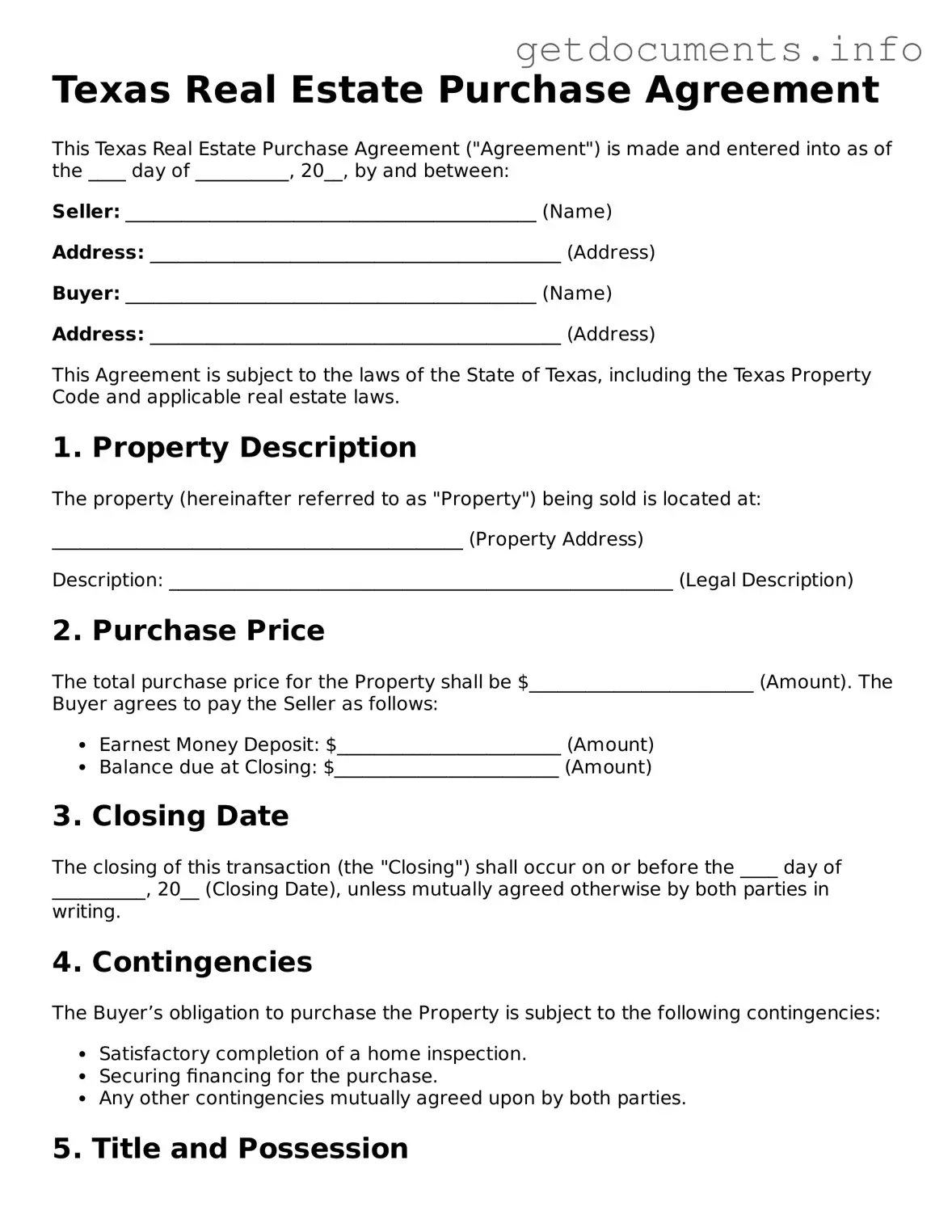Free Real Estate Purchase Agreement Template for Texas
The Texas Real Estate Purchase Agreement form is a legally binding document used in real estate transactions to outline the terms and conditions of a property sale. This agreement protects both buyers and sellers by clearly stating each party's rights and responsibilities. To get started on your real estate journey, fill out the form by clicking the button below.
Access Real Estate Purchase Agreement Editor
